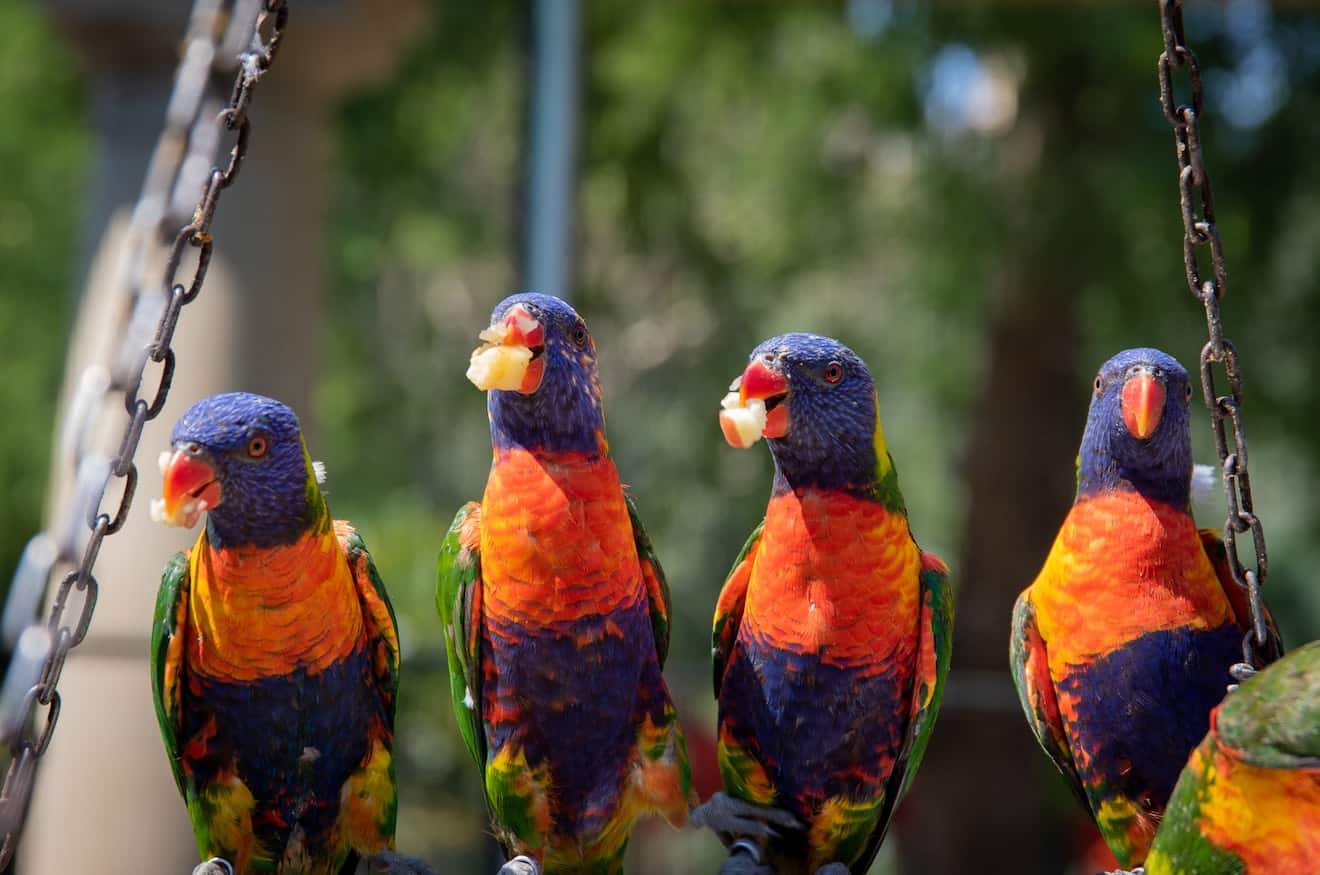Birds
Parrot Breeds
Parrots are very popular and are ideal pets. They are also known as psittacines. There are around 400 parrot species.
All parrot breeds have some features in common. They have curved beaks that are very strong. Their claws have two toes at the front and two toes at the back. Most have very bright and colourful feathers.
The majority of parrot breeds are also affectionate and create long term bonds with their human owners. They enjoy being handled if you regularly interact with them from an early age.
They are very intelligent compared to other types of birds. Some are able to learn to ‘speak’, copy noises and do tricks.
Whilst parrots have many common features, each breed is unique and has its own characteristics.
Choosing the right type of pet parrot to suit you and your family is important and will ensure you form a strong bond and are happy together.
Parrot Breeds
These parrot breeds are commonly found as pets.
Australian Parrot Breeds
The following parrot breeds are native to Australia. They are commonly seen in the wild as well as kept as pets.
Friendly Parrot Breeds
Some parrot breeds are naturally friendlier that others. They are more likely to be affectionate and bond with their humans.
African Grey Parrot
African grey are a large parrot. Their feathers are monochromatic except for their bright red tail.
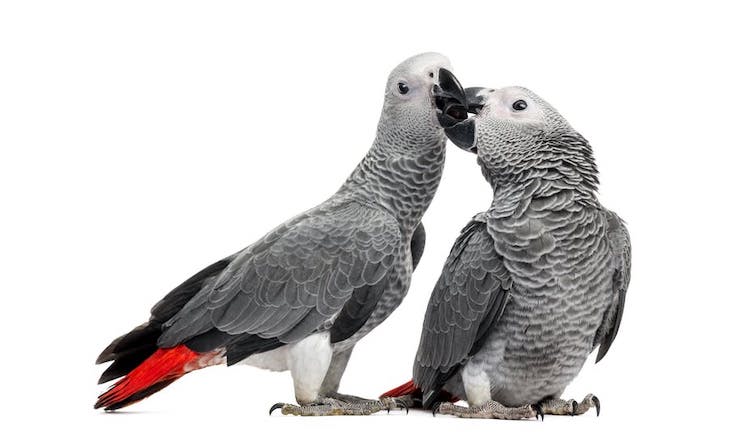
They are considered the most intelligent parrot and have the best talking ability – they can learn thousands of words and even use words in context to have very simple conversations.
Due to their intelligence they form strong bonds, usually with only one person. They require a high level of daily attention, socialisation and mental stimulation.
Amazon
There are various types of amazon parrots. They vary in size but are all medium to large parrots. Most have green bodies with different coloured heads, tails or beaks.
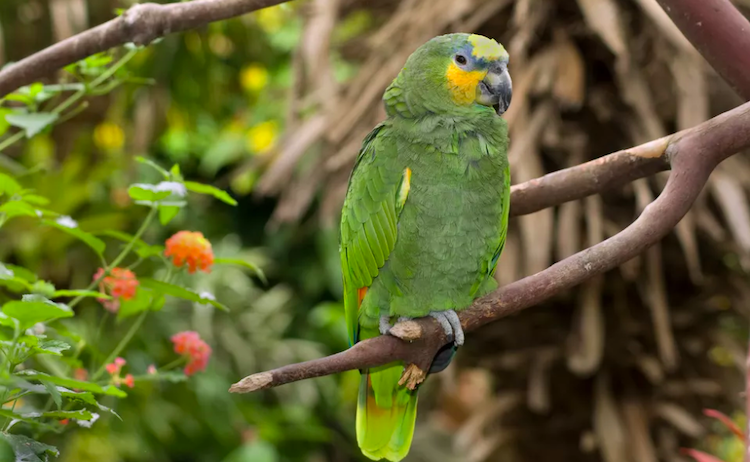
They are intelligent and can learn to speak clearly. They can be very noisy and loud at times.
Amazons require a lot of stimulation and time out of their cage to exercise daily. They must be handled and interacted with regularly to avoid them becoming aggressive.
Amazon parrots can be found in South America and can live for 50 years.
Australian King Parrot
Australian king parrots are also known as green-winged king parrots. They are a large parrot species that is native to Australia.
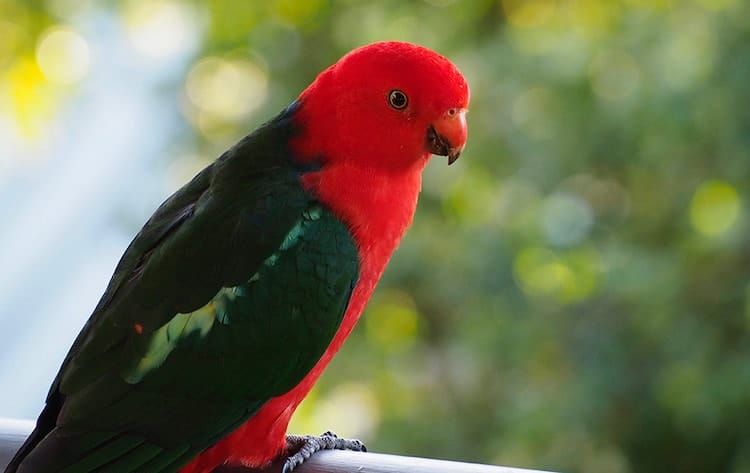
They are sexually dimorphic – the males are red and the females are green!
They are quite calm compared to other parrots. They typically don’t like to be handled and don’t bond with their owners as strongly as other parrots do.
Australian king parrots can live for up to 30 years.
Budgie
Budgies are also known as budgerigars and parakeets. They are one of the most popular pet birds and are suitable for new bird owners or families with children.
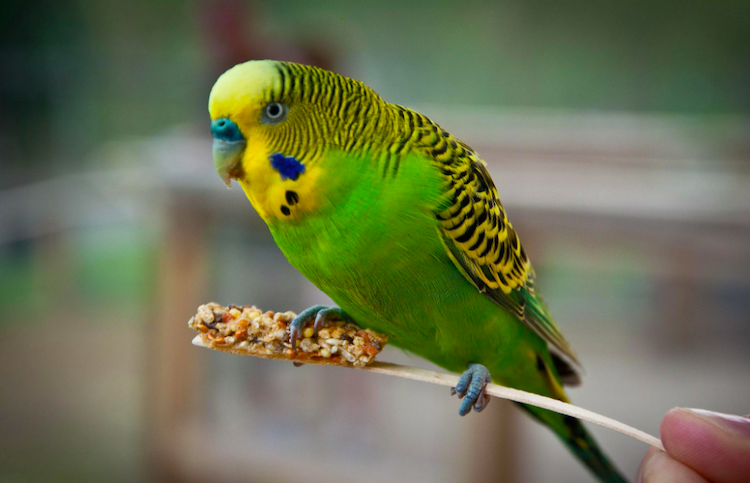
Budgies are very social and prefer to be kept in groups. They love to whistle and sing. They can also learn to talk.
On average, budgies live for 7-15 years.
Cockatiel
The cockatiel is a medium-sized parrot native to Australia.
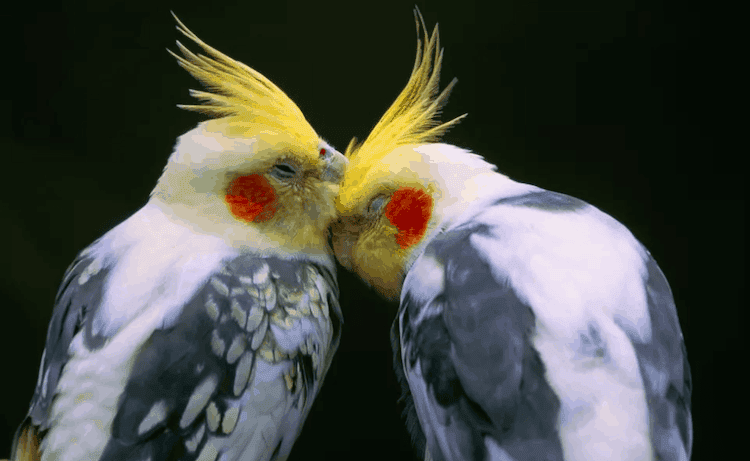
It is a popular pet bird choice due to its friendly yet outgoing personality. They love to socialise with humans, play with toys and forage for food at the bottom of their cage.
Cockatiels can live up to 20 years.
Cockatoo
There are various species of cockatoo including sulphur crested, umbrella, moluccan, rose-breasted (galah) and black cockatoos. They are recognisable by their expressive head crest.
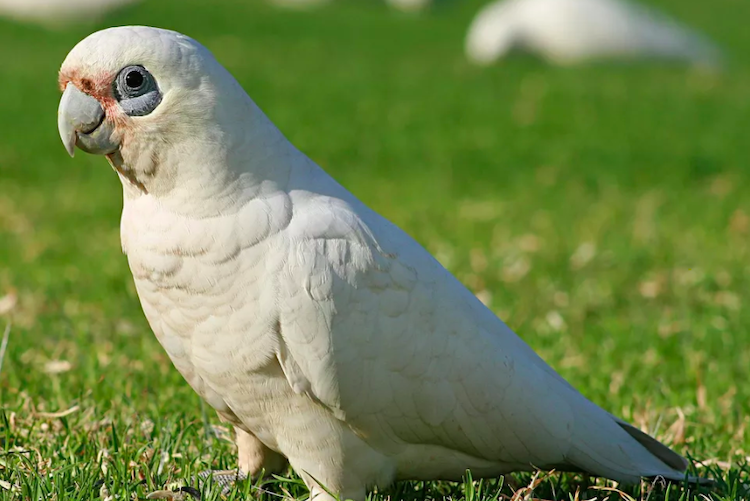
Cockatoos require a lot of socialisation and attention to be happy. They will bond strongly to their human and can be very affectionate.
Before getting a cockatoo, consider if you are able to spend time to give your pet the interaction it needs.
Cockatoos can be very noisy and can learn to talk very well. They love to chew – provide them with plenty of toys or they might destroy your belongings.
Cockatoos can live 40-80 years if cared for properly. Larger variations will live longer than small parrots.
Conure
There are many variations of conure including the sun, jenday, golden, green-cheeked, cherry-headed, black-capped and white-eyed conures.
They are all small to medium sized parrots with vibrant coloured feathers.
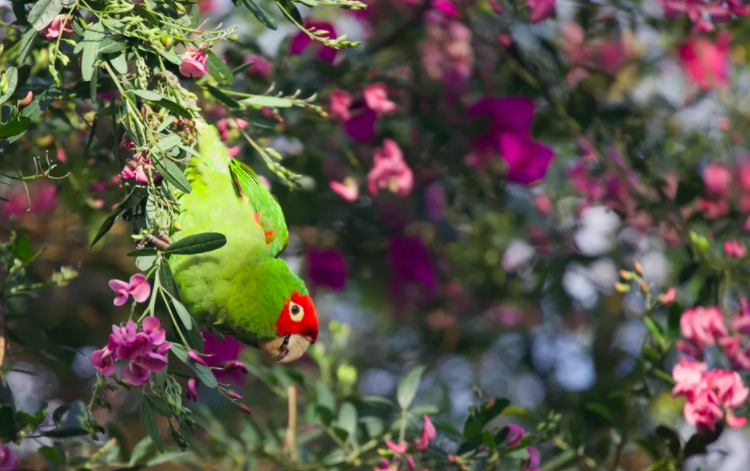
They are friendly and playful with a big personality. Conures are best for people that have owned pet birds because as they can be very active and loud.
They require a lot of exercise and the ability to fly around throughout the day. Conures are considered to be a wild, non-domesticated bird even if bred in captivity.
Conures can live 20-30 years, depending on their size and how well they are cared for.
Eclectus
Eclectus are large, brightly coloured parrots that are native to Australia. Similar to Australian king parrots, they are sexually dimorphic – the males are green and the females are red.
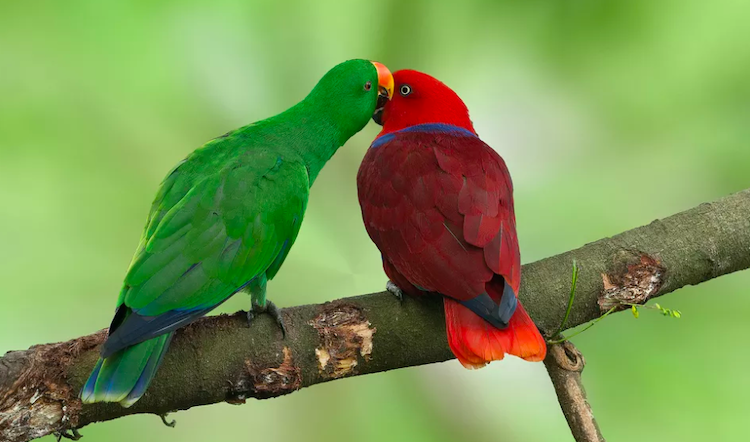
They can be very intelligent, with males being easiest to train. They are generally quiet but do make a distinctive honking noise and can be taught to speak.
Eclectus usually live to 30 years old, however some have lived up to 50.
Lorikeet
There are many types of lorikeet, with seven of them being native to Australia. The most commonly seen is the rainbow lorikeet.
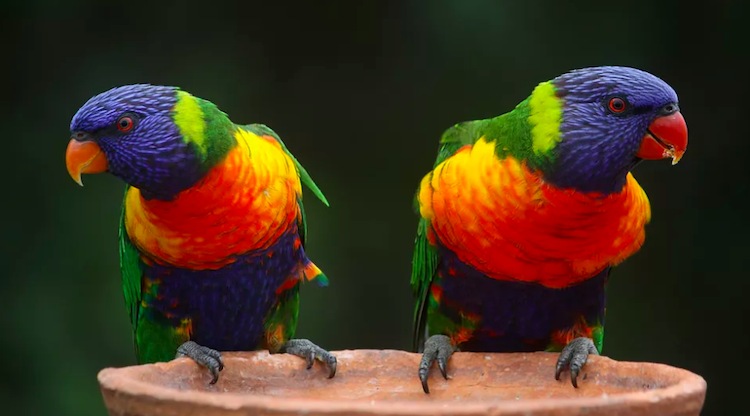
They are medium sized and brightly coloured. They are friendly and enjoy spending a lot of time with their owners.
Lorikeets can live up to 30 years.
Lovebirds
Lovebirds are also known as ‘pocket parrots’ because of their small size. Their bright, colourful feathers make them very distinctive.
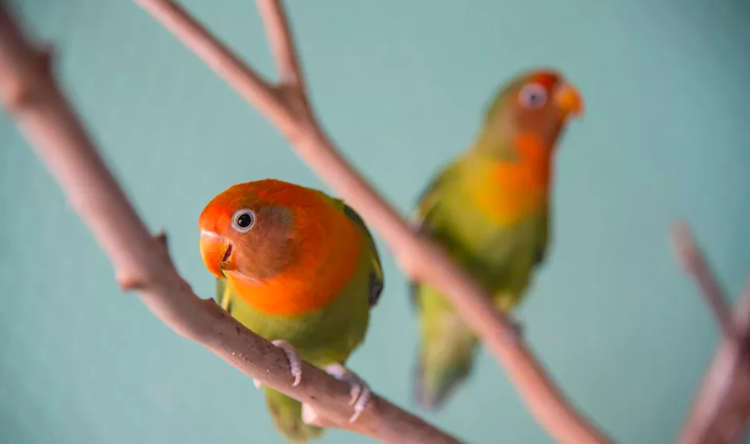
Lovebirds are very active and sociable. They can also be very territorial if not handled from a young age. Whilst not overly noisy, they will make chirping noises and can screech when demanding attention.
Lovebirds can live up to 15 years.
Macaws
There are different species of macaw including the blue and gold, greenwing, hyacinth, Hahn’s, and scarlet macaw. Macaws are large and come in many bright colours.
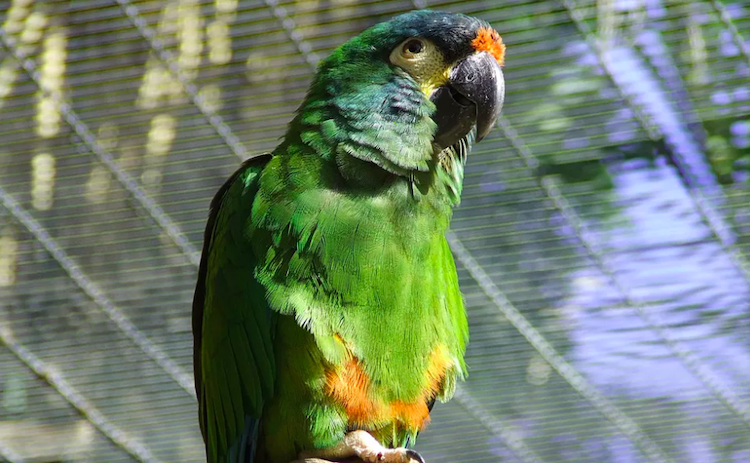
They are intelligent and can be trained to speak plus perform tricks. Macaws are very messy and very loud.
They are one of the most challenging birds and can become destructive or aggressive if not cared for properly or regularly handled.
Macaws require a large and strong cage. They are active and will need to be let out daily for exercise. Macaws can live 30-50 years.
Parrotlets
Parrotlets are the smallest type of parrot. Their size and quiet nature make them a great choice for bird owners who live in apartments or have close neighbours.
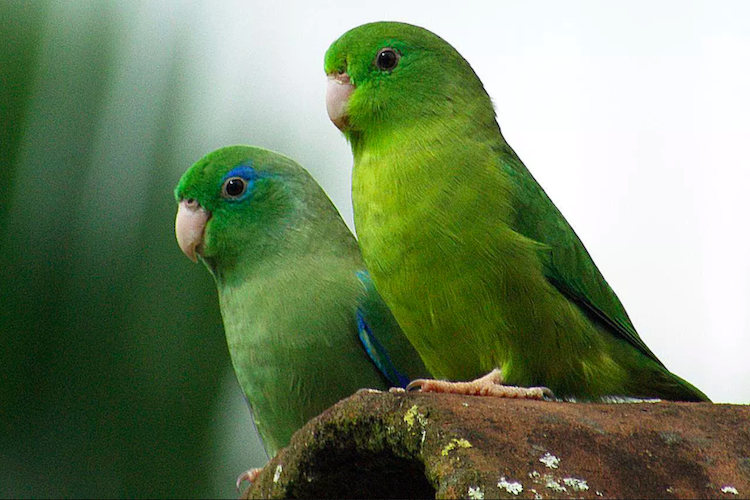
If handled daily, they can be very affectionate towards humans. They prefer to be kept alone.
Parrotlets can live 20-30 years.
Quaker Parrot
Quaker parrots are also known as monk parakeets. They are medium sized parrots.
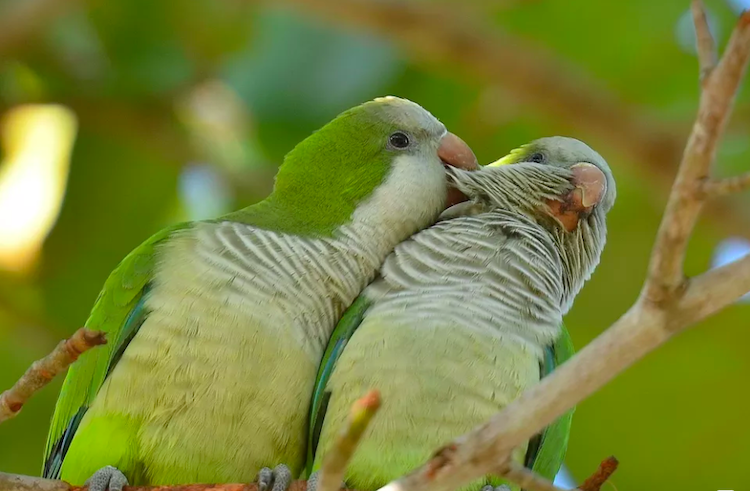
They are very active, social and confident. Quakers will often bond with one human in particular but not others. They tend to make a lot of softer noises and can learn to talk.
Quaker parrots can live 20-30 years.
Cross Breed Parrots
Parrots are able to cross breed with other types of parrot if they are both very similar. However, if they are too different then it will not work. Cross breeding is also known as hybridisation.
Cross breeding is most likely to be successful with parrots from the same genus. Different variations of the same genus are commonly cross bred to create new breeds and feather colours, e.g. different types of Macaw are cross bred.
Cross breeding will sometimes occur in nature although it is more commonly seen when humans purposely breed parrots in captivity.
You should only attempt to cross breed parrots if you know what you are doing to avoid genetic defects and health issues in your birds. Some cross bred birds are fertile but many are not.
Parrot Breeding Tips
Each type of parrot has different breeding requirements. Before breeding your birds, look into the specific requirements your species has. It can be useful to speak to other bird breeders in your area or online who have experience and can offer advice.
Breeding pairs should be kept separate from other birds. This will encourage them to breed and also prevent fights and injuries from occurring.
Most parrots require a warm space to breed. Make sure their cage is placed somewhere where it won’t get too cold. You can install heating devices in their cage or breeding boxes to make them more comfortable. Temperature requirements vary among species.
Younger birds are more likely to want to breed than older birds. Some birds, like people, just aren’t suited to one another and don’t want to breed.
Sometimes temporarily separating the pair then reuniting them can make them interested. If not, you will need to give up on that pair and introduce a new breeding partner to one of the birds.
Bird Cage for Breeding Parrots
It is best to give your breeding parrots as much space as possible.
A larger cage will make them feel more comfortable. Cage size will vary depending on the type and size of your parrots. The more territorial a species is, the more space they will need.
Parrots are more likely to breed if kept outdoors however birds do breed within indoor cages.
Provide the birds with as much nature as possible including branches, wood to chew on and leaves.
Place the cage in a quiet area. Even if your parrots are used to noise, they may not feel comfortable breeding if they do not feel 100% secure.
Placing a breeding box (aka. nesting box) inside the cage provides your parrots with somewhere to lay and raise their eggs. This mimics the sort of shelter a wild parrot would seek.
If your parrot doesn’t feel it has a safe place to lay its eggs, it may avoid breeding all together.
More Reading
- What Cage Size Should I Buy?
- What’s the right Bird Cage Size?
- Utilmate Guide for Choosing the Best Pet Bird




